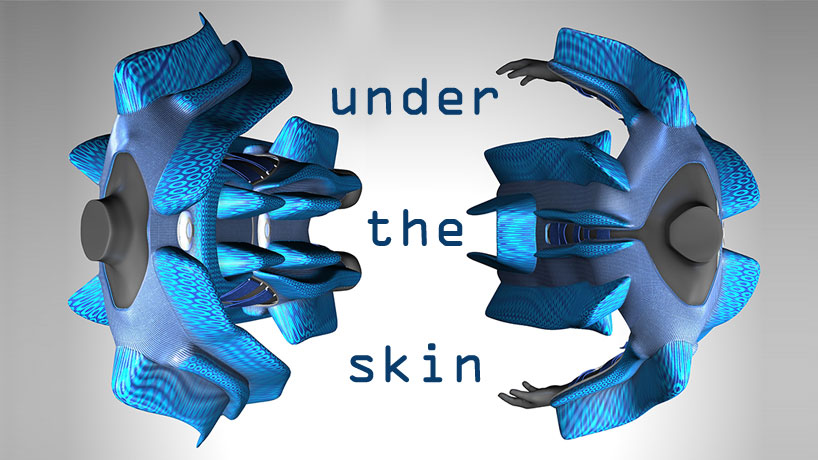
under the skin by Andreas Finke from germany
designer's own words:
BACKGROUND OF WORK
the history of armour extends far into the past. contemporary warriors are sports heroes in media grabbing broadcasts.
they risk their necks in events like redbull rampage. talking 70 feet jumps with backflips over canyons. any suggestions?
time to elevate the current state of protective garments, taking advantage of cutting edge material science and manufacturing.
STRATEGIC POSITIONING
-driving force #1 design for athletes!
lamination as the key approach to the design allows for a cohesive, integrated product that provides an unprecedented range of motion, lightweight and adaptive protective behavior in critical situations.
-driving force #2 cult: make producs for image leaders!
cultural phenomena like x-games compete even with the olympics.
react to the immmense market potential of vast audience and tailor product for protagonists.
-driving force #3 innovation: deflect infringements, create emerging markets!
3d printing, third world production facilities and global design ubiquity all drive plagiarism and rip-offs. undermine the short lived product cycles of fashionized segments through cutting edge functional technology items.
-driving force #4 accessorization: make technology wearable art!
expand target group range, from hardcore athlete to tech afficionado to art collector.
DISRUPTIVE DESIGN
- PUFFER FISH: mimetic protection
the suit design is taking its cues from the functional morphology of pufferfish.
these fish take in water when sensing predatory approach.
their expanded size – a monobody filled with water - increases their apparition and results in mimetic protection.
- ADAPTIVE SUIT: pneumatic protection
the suit adapts the form-changing aspects. the functional protection is reached through a pneumatic multichamber system that inflates, providing the user with a prosthetic expansion of embodyment.
More surface area, deep pockets that can reduce impact shock,can deflect under stress and reduce contact area of potential abrasions when crashing. The innovative morphology expresses the integration of form and function.
MATERIALS/FABRICATION
- LAMINATE
in a process of hot-melt adhesion the fabrics, foils, pipes, cells and pads are laminated into a cohesive, integrated compound that provides an unprecedented range of motion, lightweight and adaptive protective behavior in critical situations.
- SENSORIC DEPLOYMENT
terrain maps and live feed GPS data support the sensors releasing the pneumatic chambers. sensors are mounted on the bike. additional palm release can be triggered during free fall.
- INFLATION
two cartridges inflate upper torso and pelvis areas via two polyurethane airstream cycles. the piping is laminated into the suit.
- SKIN
the top coat skin is a three-dimensional knitted spacer fabric combined with silicone rubber to absorb and dissipate energy on impact.
providing bidirectionally variant stretch properties and laid out anisotropically to conform to the functional morphology of body movement and prevent wrinkling. exposed portions of the skin have a non-abrasive kevlar coating.
- FOIL
an elastic thermoplastic urethane (TPU) separation foil eliminates traction to allow the air cells below to expand during inflation.
- AIR CELLS
air cells are made of latex.
- PADS
addition pads made from extruded thermoplastic foam are glued into the suit along critical dorsal vertebrae as well as ventral chest areas to absorb high impact energy.
this superlight suit is PNEUMATIC and comes straight from the lab. on the verge between wearable art and technology.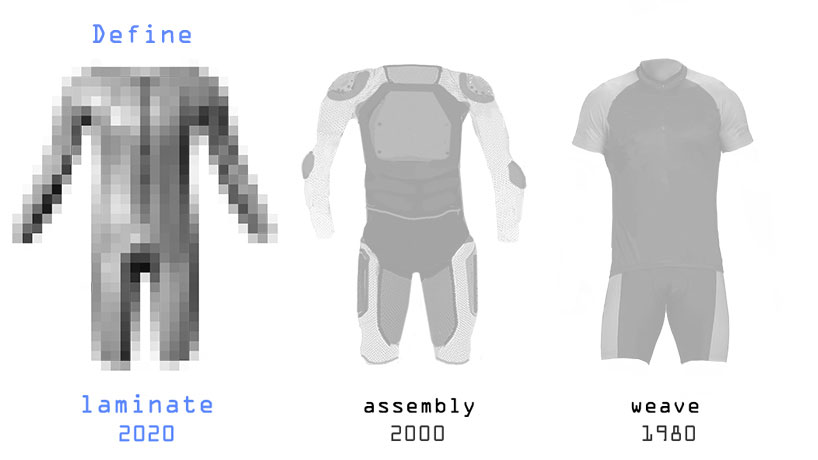
stages in functional cycling gear, 1980s improved perspiration synthetic fabric apparel, 2000s impact reducing hardshell/net assemblies, 2020s adaptive pneumatic compound suits.

concept of mimetic protection of monobody filled with water disrupted into pneumatic protection of multichamber prosthetic expansion of body.
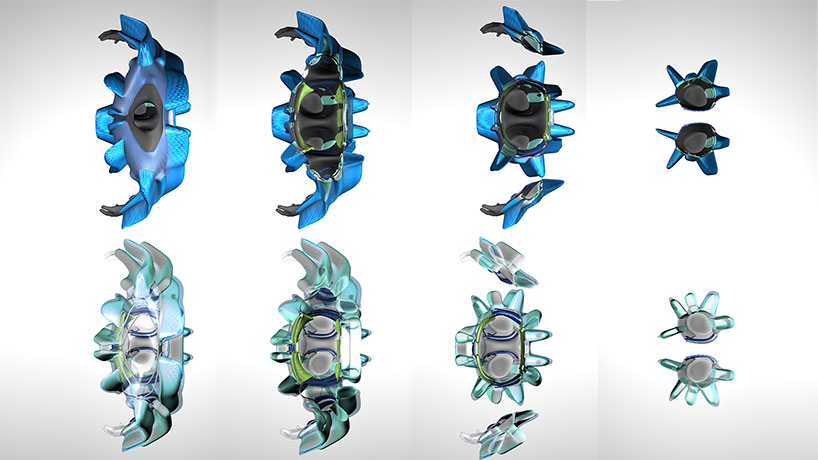
left to right: transversal sections through suit, clavicles, sternum, pelvis, femur. showing inflated multichamber surface proliferation.
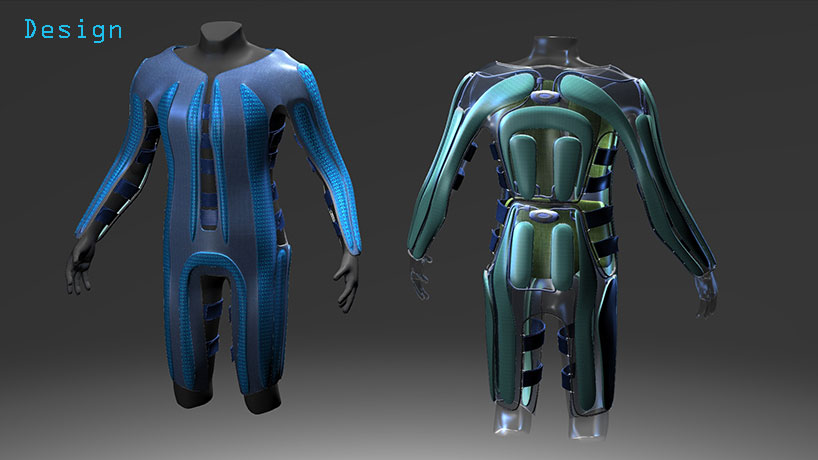
left: front view of undeployed suit. right: rear view of undeployed suit(topcoat hidden).
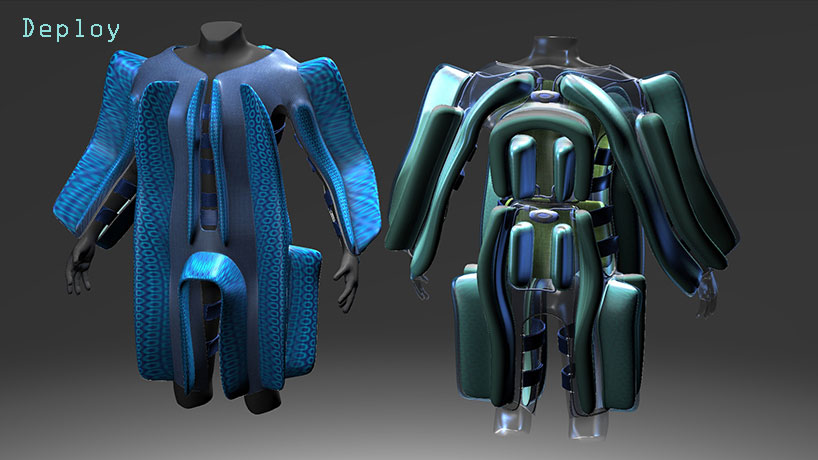
left: front view of deployed inflation. right: rear view of deployed inflation(topcoat hidden).